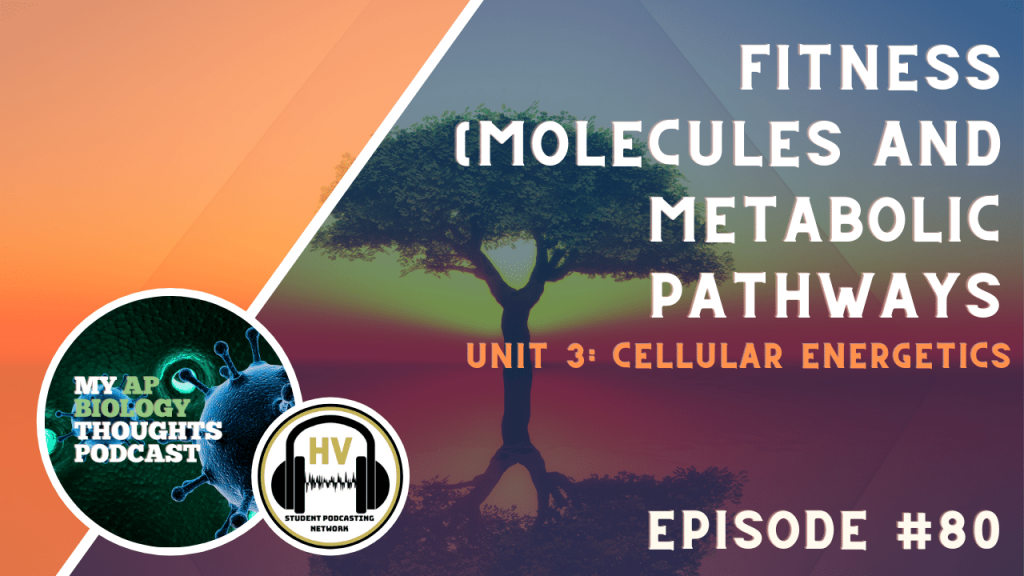Fitness (Molecules & Metabolic Pathways)

My AP Biology Thoughts
Unit 3 Cellular Energetics
Welcome to My AP Biology Thoughts podcast, my name is CJ and I am your host for episode #80 called Unit 3 Cellular Energetics: fitness. Today we will be discussing molecules and metabolic pathways
Segment 1: Introduction to Fitness
- This is a much different type of fitness taught back in the evolution unit. This fitness is in energetics and we mainly look at the variation in molecules that allow the organism to survive and/or reproduce in a different environment. The whole point of this fitness is to see how organisms change when a new condition is introduced. For reference, when we stand still and have normal amounts of oxygen, our body uses aerobic respiration, meaning we get energy from the oxygen around us and our body goes through cellular respiration. However when we are running or going through conditions with limited amounts of oxygen, our body switches over to anaerobic respiration. This switch still allows us to get energy, however not as much. This change shows us how fit we are and ties into how our body changes with the different environment. However, that example was just a general overview, in fitness we look at the specific molecules.
Segment 2: More About Fitness
- If we want to look at more examples we have to separate plants and animals. A main example of important molecules that provides for the animal is hemoglobin. This cell is found in the blood, and this is the main transporter of oxygen throughout the body. The oxygen bonds to these molecules and it is then transported through the bloodstream to all of the different cells. However, hemoglobin changes and adapts to its environment. We see that hemoglobin binds to oxygen differently throughout stages of life. For fetuses, their hemoglobin is different in terms of more oxygen being able to bond to it. This is because fetuses do not expend as much energy as an adult, however it needs more oxygen for metabolism and growth. The fetal hemoglobin then is able to attach to more oxygen molecules, however that means it is much harder to get oxygen off of the hemoglobin. This is why adults use a hemoglobin that attaches to less oxygens, but it is easier to separate. Now for plants, the main example of fitness is chlorophyll. With low amounts of light, the plant typically uses chlorophyll b which is more of a pigment than a center for photosynthesis. With higher levels of light, the plant typically uses chlorophyll a, which is the main reaction center.
Segment 3: Connection to the Course
- This directly relates to the unit by connecting cellular respiration to the real world. We learn about aerobic and anaerobic, however we don’t learn when we use them and under what conditions. But more importantly, we don’t learn what the molecules do to adapt to this. This chapter allows us to conceptually understand why our body does what it does. It is essential to know the connection between variation in the number and types of molecules within cells that allows the organism to survive under different ecosystems.
Thank you for listening to this episode of My AP Biology Thoughts. For more student-ran podcasts and digital content, make sure that you visit www.hvspn.com.
Music Credits:
- “Ice Flow” Kevin MacLeod (incompetech.com)
- Licensed under Creative Commons: By Attribution 4.0 License
- http://creativecommons.org/licenses/by/4.0/
Subscribe to our Podcast
Connect with us on Social Media
Twitter @thehvspn
Welcome to My AP Biology Thoughts podcast, this is episode #80 called Unit 3 Cellular Energetics: fitness.

